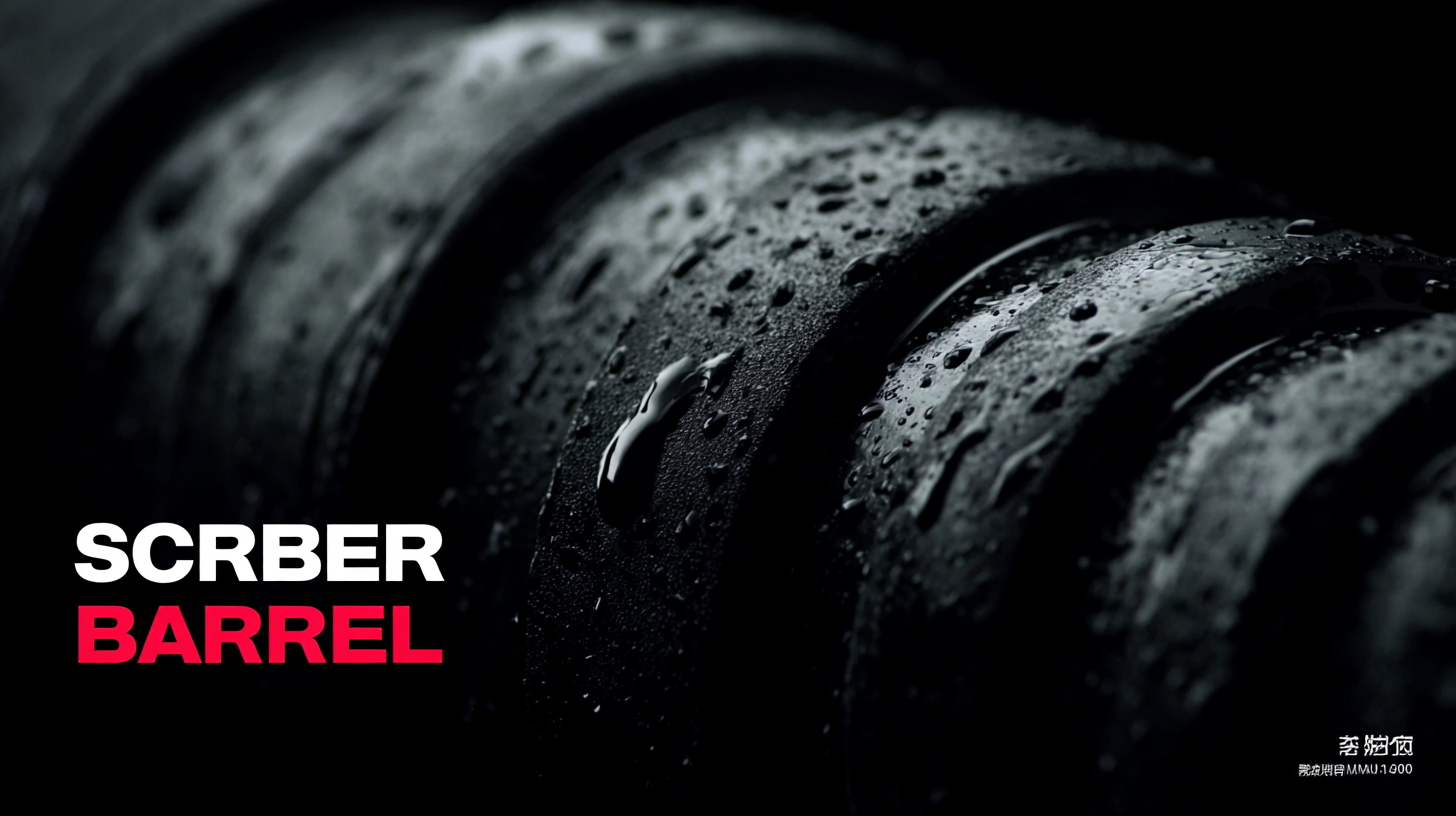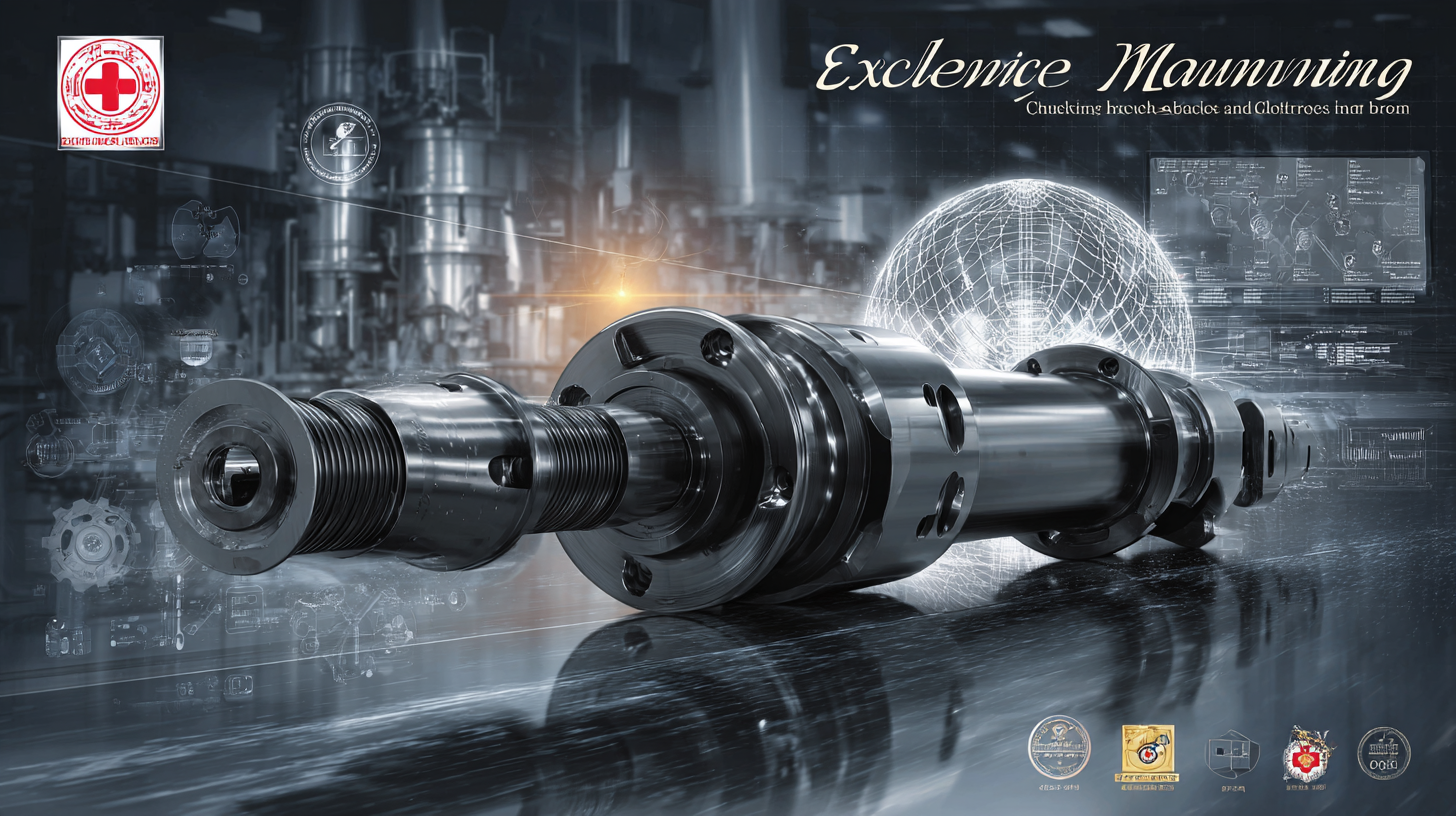
Excellence in Manufacturing Best Rubber Screw Barrels from China Empowering Global Industry
In the ever-evolving landscape of manufacturing, the importance of high-quality components cannot be overstated. According to the latest industry reports, the global consumption of rubber screw barrels is projected to reach a staggering $2.5 billion by 2025, driven by the increasing demand for rubber processing machinery across various sectors.

China's manufacturing sector stands out as a pivotal player in this arena, leveraging advanced technologies and stringent quality control measures to produce some of the best rubber screw barrels on the market. These components not only enhance the efficiency of rubber processing but also empower manufacturers worldwide to meet the growing demands for durable and innovative rubber products. As a key driver of the global industry, the excellence found in China's rubber screw barrels reflects a commitment to quality and innovation that can shape the future of manufacturing.
Understanding the Common Issues with Rubber Screw Barrels in Manufacturing
 In the complex landscape of rubber manufacturing, the reliability of screw barrels plays a pivotal role. Common issues such as wear and tear, improper temperature control, and material degradation can significantly impact production efficiency and product quality. According to a report from Smithers Pira, the global rubber processing equipment market is projected to reach $14 billion by 2025, highlighting the growing demand for high-quality components like rubber screw barrels. Manufacturers must prioritize addressing these challenges to maintain their competitive edge.
In the complex landscape of rubber manufacturing, the reliability of screw barrels plays a pivotal role. Common issues such as wear and tear, improper temperature control, and material degradation can significantly impact production efficiency and product quality. According to a report from Smithers Pira, the global rubber processing equipment market is projected to reach $14 billion by 2025, highlighting the growing demand for high-quality components like rubber screw barrels. Manufacturers must prioritize addressing these challenges to maintain their competitive edge.
One of the most prevalent issues is wear, which can lead to costly downtime and reduced output. A study by the International Rubber Study Group indicates that improper materials and low-grade manufacturing processes can result in a 30% reduction in screw barrel lifespan. Additionally, temperature inconsistencies during the processing of rubber can cause viscosity variations, further complicating operations. Advanced manufacturing techniques in China are emerging to tackle these problems, providing enhanced durability and performance in rubber screw barrels that cater to the global industry's evolving needs. By understanding these common issues, manufacturers can make informed choices that optimize production and contribute to sustainable growth in the sector.
Key Design Flaws of Rubber Screw Barrels Impacting Efficiency
The efficiency of rubber screw barrels plays a crucial role in the manufacturing process, yet several common design flaws can significantly impede performance. One such flaw is inadequate heating distribution, which affects the melting and mixing of rubber compounds. When heat is unevenly distributed, certain areas may overheat while others remain cold, leading to inconsistent material flow and quality.
To enhance efficiency, manufacturers should invest in barrels with advanced heating technology that ensures uniform temperature distribution. Regular maintenance and calibration can also prevent overheating issues.
Another critical design flaw is the geometry of the screw flight. A poorly designed screw can cause excessive shear stress, resulting in material degradation. It’s essential to consider the specific application and rubber type when designing the screw profile.
Tip: Collaborate with experienced engineers to optimize screw design based on unique processing requirements. Additionally, periodic analysis of production parameters will help identify and correct design flaws early, ensuring optimal performance and product quality.
Best Practices for Troubleshooting Rubber Screw Barrel Problems
When it comes to rubber processing, troubleshooting problems with screw barrels is crucial for maintaining efficiency and product quality. Common issues include uneven melt temperature, poor material feeding, and excessive wear. Identifying the root cause of these problems can save manufacturers significant time and resources. Regular inspection of the screw design and barrel material is essential to ensure they are suited for the specific rubber type being processed. Implementing preventive maintenance routines can also help in catching potential faults before they lead to costly downtime.
Another effective practice involves utilizing temperature and pressure gauges to monitor the processing conditions closely. Any fluctuations can indicate underlying issues with the screw barrel. Additionally, recalibrating machinery settings based on material changes or product adjustments can prevent performance issues. Training operators to recognize the early signs of barrel problems can be instrumental in maintaining a smooth manufacturing process. By adhering to these best practices, manufacturers can enhance their production efficiency and uphold the high-quality standards expected in the global rubber industry.
Excellence in Manufacturing Best Rubber Screw Barrels - Best Practices for Troubleshooting Rubber Screw Barrel Problems
| Issue | Possible Causes | Recommended Solutions | Prevention Tips |
|---|---|---|---|
| Inconsistent Material Flow | Blocked feed zone, improper screw design | Check for blockages, consider redesigning screw | Regular maintenance and inspection |
| Surface Damage | Improper handling, abrasive materials | Inspect and improve handling procedures | Train staff on handling techniques |
| Temperature Issues | Incorrect heating zones, poor insulation | Adjust heating zones, improve insulation | Regularly monitor temperature settings |
| Poor Mixing | Incorrect screw configuration, material segregation | Review screw design for mixing capabilities | Blend materials well before processing |
Analyzing the Effects of Material Quality on Rubber Screw Barrels
The quality of materials used in manufacturing rubber screw barrels has a profound impact on the performance and longevity of these essential components in the global rubber processing industry. According to a recent report by Smithers Pira, the market for rubber processing machinery is projected to reach USD 6 billion by 2025, highlighting the importance of high-quality manufacturing practices. Specifically, the choice of material in screw barrel production influences not only durability but also efficiency, as materials like high-density polyethylene and wear-resistant alloys contribute significantly to reducing operational costs.
In addition, studies indicate that variations in material quality can lead to substantial differences in processing effectiveness. A 2021 analysis by the International Rubber Society revealed that barrels made from premium materials yield up to 15% higher throughput compared to those manufactured with lower-grade plastics. This discrepancy underscores the critical need for manufacturers to prioritize material quality in order to enhance product performance and remain competitive in an increasingly demanding market. As global industries continue to evolve, the importance of investing in superior rubber screw barrels cannot be overstated, as they are pivotal in optimizing manufacturing efficiency.

Innovative Solutions to Overcome Manufacturing Challenges in Rubber Screw Barrels
The manufacturing industry is facing significant challenges, particularly in the production of rubber screw barrels, which are essential components in various plastic processing applications. According to a recent report by Market Research Future, the global rubber processing machinery market is expected to reach $6.9 billion by 2026, driven by the increasing demand for high-performance materials and sustainable manufacturing practices. This scenario emphasizes the need for innovative solutions that can enhance efficiency and reduce production costs.
To overcome these manufacturing challenges, Chinese manufacturers are at the forefront of developing advanced rubber screw barrels utilizing cutting-edge technologies such as precision machining and improved polymer formulations. A study from Technavio projects that the technological advancements in rubber processing machinery will drive a compound annual growth rate (CAGR) of over 5% from 2021 to 2025. These innovations not only boost the production capacity but also enhance the durability and performance of the screw barrels, contributing to reduced downtime and maintenance costs for manufacturers across the globe.
The collaboration between Chinese producers and international firms further accelerates the adoption of these innovative solutions, ensuring that the global industry remains competitive and responsive to market demands.
